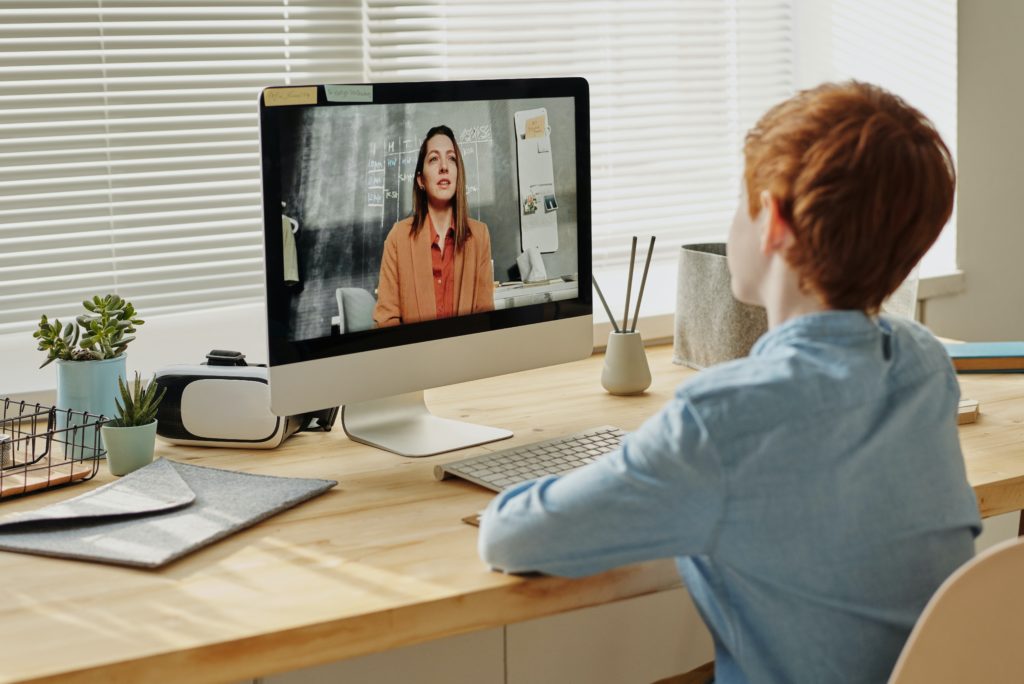If you don't have access to internet services or smartphones...
Relay Services for Children with Hearing Loss
There are many technologies available to help children who have difficulty understanding speech over the phone. This challenge can be made worse by the poor sound quality of some cell phones and speakerphones.
One valuable solution is the nationwide relay system, a free, 24/7 service available in every state for domestic calls. (Standard long-distance charges may still apply.) The key feature of the relay system is that a child with hearing loss can view a screen where spoken words are either typed or signed by a trained Communications Assistant (CA). All calls are handled confidentially.
Relay services operate in several different modes, but all begin by connecting to a CA who works for a relay provider—usually one of the major landline phone companies. You can start a relay call by:
- Dialing a toll-free number (such as 7-1-1)
- Using a computer connected to the internet
- Using a mobile device or PDA
Here are the main relay modes:

Video Relay Services (VRS)
Video Relay Services allow people who use sign language to make phone calls through a Communications Assistant (CA) who acts as an interpreter. Using video equipment, the caller signs to the CA, who then speaks to the hearing person on the other end. The CA listens to the response and signs it back to the caller.
VRS is especially helpful for people who use American Sign Language (ASL), including children who may not be able to type easily on a TTY device. Although the Federal Communications Commission (FCC) does not require this service, many programs offer it voluntarily.

Video Relay Services (VRS) – This enables individuals who use sign language to make relay calls through the use of CAs who can interpret their calls. The caller signs to the CA with the use of video equipment and the CA voices what is signed to the called party and then signs back to the caller. This type of relay service is not required by the FCC, but is offered on a voluntary basis by certain programs. This option is helpful for people who use American Sign Language (ASL) and for people who cannot type on the TTY easily, such as children who are ASL users.
Voice Carry Over (VCO)
Voice Carry Over is designed for individuals with hearing loss who prefer to speak for themselves during a phone call. A Communications Assistant (CA) dials the hearing person and listens to their response. The CA then types what the hearing person says onto a screen for the child (or user) with hearing loss to read. If both people on the call have hearing loss, the CA can transcribe both sides of the conversation. One limitation of this method is that the hearing person knows a CA is involved in the call.
Two-Line Voice Carry Over (2LVCO)
Two-Line VCO works similarly to regular VCO, but with an added benefit: the child with hearing loss uses a separate phone line to speak directly to the other person, so their voice is not transcribed. Meanwhile, the CA listens to the other person and types their responses on a screen for the child to read. In this case, the other caller may not even realize a CA is part of the conversation.
This setup requires:
- A standard phone for speaking (no special equipment is needed for the speaker)
- Internet access for the child to receive the transcribed text
- Two separate phone lines if using dial-up or DSL (one for voice, one for data)
How Transcription Is Viewed
There are several ways for the child to view the transcribed conversation:
- On any Internet-connected computer
- Using “terminal mode” on a computer
- On a handheld device like a PDA (Personal Digital Assistant) that supports web access or SMS/chat features
Older technology, like TTY/TTD devices, can also be used. These devices typically show text on a small one- or two-line screen, which is less convenient compared to modern computer or PDA displays.
Captioned Phones- This phone works like a regular phone but also displays real-time captions of what the other person is saying on a screen. The individual on the other side of the phone speaks into the phone as they normally would. When the other person talks, their speech is transcribed into text using either automated speech recognition or a human captioning assistant. The captions appear on a screen built into the phone, so you can read what is being said in addition to hearing it.
Hearing Carry Over (HCO)
Hearing Carry Over is for people who have difficulty speaking but can hear well on the phone. Instead of speaking, the HCO user types their responses on a TTY device. A Communications Assistant (CA) reads the typed message aloud to the person on the other end of the call. When the other person responds, the HCO user hears their reply directly. For more details, contact your relay service provider.
Speech-to-Speech (STS)
All states offer Speech-to-Speech services to help people with speech disabilities communicate by voice. Instead of typing, users speak directly to a specially trained CA who is skilled at understanding a wide range of speech patterns. The CA then repeats what was said to the other person on the call. For more information, contact your relay service provider.
Spanish Relay Services
While Spanish relay services are not required for interstate calls, many states with large Spanish-speaking populations offer this option voluntarily.
Rear Window Captions
Rear Window Captioning is a captioning system often used in public venues like movie theaters. It lets people who need captions see them without affecting the experience of other audience members. The system uses a light-emitting diode (LED) at the back of the theater to display reversed captions. Users place a transparent acrylic panel on their seat, which reflects the captions so they appear under or over the screen. The panels are adjustable and portable, allowing users to sit anywhere in the room.
More information about the relay system and CapTel is available in Illinois from the Illinois Telecommunication Access Corporation at http://www.itactty.org/ or visit the FCC Website at: www.fcc.gov/cgb/consumerfacts/trs.html.



